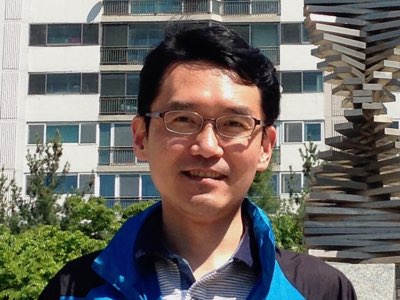Back To Listings


- First authors: Thi Thanh Tan Lien
- Corresponding authors: Guido Ori, Young-Han Shin
- Whole authors: Tan-Lien Pham, Mohammed Guerboub, Assil Bouzid, Mauro Boero, Carlo Massobrio, Young-Han Shin, Guido Ori
- Authors from M3L: Thi Thanh Tan Lien Pham, Young-Han Shin
Sodium oxyhalide and hydroxyhalide antiperovskites are promising solid-state electrolytes (SSE) because of their low melting point and rapid synthesis and, as such, they are becoming competitive with respect to other systems. While the structure and the mechanism underlying the ions dynamics are increasingly well understood in crystalline antiperovskites, their amorphous counterpart lacks precise structural characterization, hampering any conclusive insight into atomic-scale properties. In this work, we resort to first-principles molecular dynamics within the Car-Parrinello scheme to assess the structure and ions dynamics of amorphous Na3−xOHxCl, (with x=0, 0.5, 1) antiperovskites at a quantitative level. We obtain a detailed structural description of these amorphous systems, unveiling the mechanism inherent in the dynamics of Na ions, the role of H atoms, and the resulting ionic conductivity. Our results demonstrate that the structure of amorphous Na3OCl significantly departs from its crystal phase, showing very limited intermediate-range order and a short-range order mainly driven by four-fold Na atoms. Our results reveal that there is no evidence of phase separation in the amorphous Na3−xOHxCl, unlike the previous conjectured model of glassy Li3OCl. The amorphous structure of Na3OCl features remarkable Na ion dynamics and ionic conductivity, rivaling that of defective crystalline phases and highlighting its potential as a promising solid-state electrolyte. In the hydroxylated models, the presence of hydroxyl OH− anions plays a crucial role in the mobility of Na ions. This is facilitated by the rapid rotation of O-H bonds and paddlewheel-type mechanisms, leading to enhanced ion mobility and efficient transport in the amorphous Na3−xOHxCl, systems. This work provides unprecedented physical and chemical insight into the interplay between structure, bonding, and ions transport in amorphous sodium-rich oxyhalide and hydroxyhalide antiperovskites, paving the way to their practical realization in next-generation SSE.
Authors from M3L

Thi Thanh Tan Lien Pham
lienpham1011@mail.ulsan.ac.kr